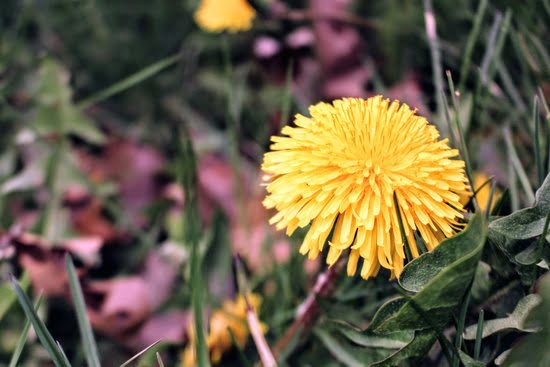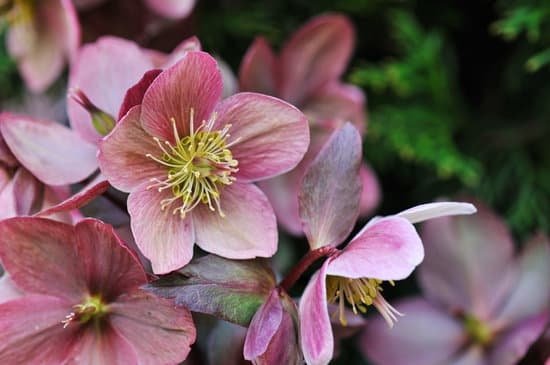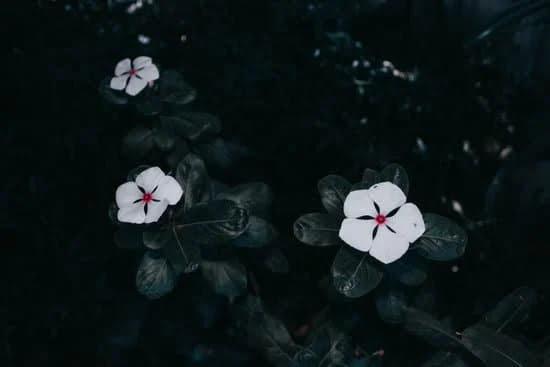As the winter chill begins to fade and the flowers start to bloom, it’s time to start thinking about spring gardening ideas. Whether you’re a seasoned gardener or just getting started, there’s something truly special about the arrival of this season and the opportunity to cultivate a beautiful outdoor space.
In this blog post, we’ll explore a variety of tips and tricks for making the most of your spring garden, from preparing the soil to choosing the right plants and engaging in sustainable practices.
Preparing the soil is a crucial step in setting the foundation for a successful garden. In this section, we’ll delve into the importance of nutrient-rich soil and provide guidance on how to improve its quality through methods such as composting and mulching. By understanding how to properly prepare your soil, you can ensure that your plants have everything they need to thrive throughout the season.
When it comes to choosing the right plants for your spring garden, there are many factors to consider-from local climate and conditions to personal preferences. We’ll discuss an array of options, including flowers, vegetables, and herbs that are well-suited for spring planting. By taking these factors into account, you can create a vibrant and diverse garden that caters to your specific needs and desires.
Preparing the Soil
Tips for Preparing Nutrient-Rich Soil
One of the most important aspects of successful spring gardening is ensuring that the soil is nutrient-rich and ready for planting. To achieve this, consider incorporating compost or organic matter into the soil. This will provide essential nutrients for plant growth and improve soil structure.
Additionally, mulching can help to retain moisture in the soil, suppress weeds, and regulate soil temperature. By taking these steps to prepare the soil, you can set the stage for a bountiful and thriving garden.
Methods for Improving Soil Quality
There are several methods for improving soil quality in preparation for spring planting. Composting kitchen scraps, yard waste, and other organic materials can enrich the soil with vital nutrients. Another effective practice is to use cover crops, which can help to prevent erosion, suppress weeds, and enhance soil fertility.
Additionally, incorporating natural fertilizers like fish emulsion or bone meal can provide essential nutrients to support healthy plant growth. By utilizing these techniques to improve soil quality, you can create an optimal growing environment for your garden.
Incorporating Spring Gardening Ideas
When preparing the soil for spring gardening, it’s important to keep in mind the specific needs of the plants you intend to grow. Consider incorporating spring gardening ideas such as adding organic amendments like compost or manure to increase fertility and drainage in the soil. Take into account the pH levels of your garden area-some plants require acidic or alkaline soils to thrive.
By planning ahead and taking these measures to prepare nutrient-rich soil tailored to your specific plants’ needs, you set a solid foundation for a successful spring garden.
Choosing the Right Plants
When it comes to spring gardening ideas, choosing the right plants is crucial for a successful and beautiful garden. Whether you’re interested in growing flowers, vegetables, or herbs, it’s important to select plants that are well-suited to the local climate and conditions. Consider factors such as sunlight exposure, water requirements, and soil type when deciding which plants to include in your spring garden.
For those looking to add some color to their outdoor space, popular flowering plants for spring include tulips, daffodils, and pansies. These vibrant blooms are perfect for adding a pop of color to your garden after the winter months. When it comes to vegetables, consider planting cool-weather crops such as lettuce, spinach, and peas in early spring. These vegetables thrive in the milder temperatures and can be harvested in time for summer salads.
Herb gardens are also a great addition to any spring garden. Popular herbs like basil, mint, and rosemary can be grown in containers or directly in the ground and provide fresh flavors for cooking throughout the season. Regardless of what type of plants you choose for your spring garden, make sure they are well-suited for your region’s climate and will have the best chance of thriving.
| Plant Type | Popular Choices |
|---|---|
| Flowers | Tulips, Daffodils, Pansies |
| Vegetables | Lettuce, Spinach, Peas |
| Herbs | Basil, Mint, Rosemary |
Planning the Garden Layout
When it comes to spring gardening ideas, one of the most crucial aspects to consider is the layout of your garden. Planning and designing the layout carefully can contribute significantly to the success and aesthetic appeal of your garden. First and foremost, it’s important to consider factors such as sunlight exposure, water access, and companion planting.
Ensuring that each plant receives adequate sunlight is essential for their growth and productivity. Additionally, grouping plants with similar water needs together can make irrigation more efficient.
Maximizing space is another key consideration when planning your garden layout. Utilizing vertical space for climbing plants or installing raised beds can help optimize the available area and allow for a greater variety of plants. Furthermore, creating pathways between garden beds can make maintenance tasks more manageable and contribute to an organized and visually appealing layout.
Considerations for Garden Layout
| Consideration | Tips |
|---|---|
| Sunlight Exposure | Position sun-loving plants in areas with ample sunlight while providing shade for those that prefer cooler conditions. |
| Water Access | Group plants with similar water needs together to streamline irrigation processes. |
| Companion Planting | Research companion planting combinations to maximize space, deter pests, and promote overall garden health. |
| Vertical Gardening | Explore vertical gardening options such as trellises or hanging planters to make the most of limited space. |
Incorporating aesthetically pleasing elements into your garden layout can also enhance its overall look. This can include adding decorative features like statues or colorful planters, as well as incorporating various textures and heights among the plantings. By carefully planning the layout of your garden, you can create a beautiful outdoor space that is both functional and visually appealing.
Spring Garden Maintenance
As the weather warms up and the days get longer, spring brings with it a host of gardening tasks to ensure a healthy and thriving garden. From weeding to pest control, proper maintenance is crucial for the success of your garden.
Weeding and Pruning
One of the first tasks to tackle in your spring garden maintenance is weeding. With the arrival of warmer temperatures, weeds will begin to sprout and compete with your plants for nutrients and water. Regularly check and remove any unwanted plants from your garden beds to keep them in top condition.
Additionally, pruning is essential for promoting healthy growth and maintaining the shape of your plants. Trim back dead or overgrown branches to encourage new growth and enhance the overall appearance of your garden.
Pest Control
Another important aspect of spring garden maintenance is pest control. Keep an eye out for early signs of pest infestations on your plants, such as chewed leaves or wilting foliage. Introducing natural predators like ladybugs or praying mantises can help keep pest populations in check without resorting to harsh chemicals that can harm the environment.
Soil Care
Lastly, don’t forget about the soil. Spring is an ideal time to supplement your soil with organic matter such as compost or mulch to provide essential nutrients for your plants as they start their growing season. This will help ensure a bountiful harvest later in the year and support overall plant health throughout the growing season.
By staying on top of these maintenance tasks, you are setting yourself up for a successful growing season while also creating a beautiful and flourishing garden space. Remember that regular care and attention now will pay off later with stunning blooms and abundant harvests.
Creative Container Gardening Ideas
Spring is the perfect time to unleash your creativity in the garden, and container gardening offers a fantastic opportunity to do just that. Whether you have limited outdoor space or simply want to add an eye-catching display to your patio or balcony, there are endless possibilities for creating unique and visually appealing container gardens. Here are some creative spring gardening ideas for container gardening:
- Vertical Gardens: Utilize wall space by creating a vertical garden using hanging containers or wall-mounted planters. This is not only a space-saving solution but also adds a beautiful green element to your outdoor area.
- Repurposed Containers: Get crafty and repurpose items like old watering cans, wooden crates, or even shoes as containers for your plants. This not only adds a quirky touch to your garden but also reduces waste by giving new life to unused items.
- Fairy Gardens: Create a whimsical fairy garden by assembling tiny figurines, colorful pebbles, and miniature plants within a shallow container. This is a delightful way to add charm and enchantment to your outdoor space.
In addition to these creative ideas, it’s important to consider the practical aspects of container gardening. Pay attention to the specific needs of the plants you choose, such as sunlight requirements and proper drainage. Remember that containers can dry out quicker than traditional beds, so be vigilant with watering and consider using moisture-retentive potting mixtures.
Get ready to let your imagination run wild and elevate your spring gardening experience with these innovative container gardening ideas.
Sustainable Gardening Practices
When it comes to spring gardening ideas, sustainability should be at the forefront of your mind. Here are some eco-friendly tips and practices to consider implementing in your garden:
- Reduce water usage: Implementing a drip irrigation system or collecting rainwater for your garden can help reduce water waste. Consider xeriscaping with drought-tolerant plants to minimize the need for frequent watering.
- Attract beneficial insects: Encourage the presence of beneficial insects such as ladybugs, lacewings, and bees by planting native flowering plants. These insects can help control pests in your garden without the use of harmful chemicals.
- Use organic fertilizers: Avoid synthetic fertilizers and opt for natural alternatives such as compost, manure, or organic plant-based fertilizers. These options provide essential nutrients to your plants while minimizing the risk of chemical runoff into the environment.
Incorporating these sustainable gardening practices not only benefits the environment but also contributes to the overall health and success of your garden. By taking small steps towards sustainability, you can create a thriving and eco-friendly outdoor space that you can enjoy for years to come.
Spring Gardening Projects for Kids
In conclusion, spring is the perfect time to get back into the garden and breathe new life into outdoor spaces. By preparing the soil, choosing the right plants, planning the garden layout, and performing regular maintenance, gardeners can set themselves up for a successful and bountiful season.
Additionally, embracing creative container gardening ideas and sustainable gardening practices can help maximize space and benefit the environment. And let’s not forget about getting kids involved in spring gardening projects, as it can be a fun and educational way to instill a love for nature in the younger generation.
When it comes to spring gardening ideas, involving children in outdoor activities is not only beneficial for their development but also helps them develop an appreciation for nature and the environment. Whether it’s planting a small vegetable garden or creating a butterfly garden, there are plenty of fun and educational projects that kids can participate in.
By engaging in these activities, children can learn valuable skills and develop an understanding of where their food comes from, all while enjoying the outdoors.
As we look forward to the warmer weather and longer days of spring, now is the ideal time to start planning and preparing for a successful gardening season. With careful consideration of soil preparation, plant selection, garden layout, maintenance tasks, container gardening ideas, sustainable practices, and involving kids in gardening projects – there are endless possibilities for creating a beautiful and thriving garden this spring.
It’s an exciting time for gardeners of all ages to get their hands dirty and watch their efforts blossom into fruitful gardens full of colorful flowers and delicious vegetables.
Frequently Asked Questions
What Is the Best Thing to Plant in Spring?
The best thing to plant in spring depends on your location and climate, but generally, vegetables like tomatoes, peppers, and cucumbers are good choices. Flowers like marigolds and zinnias also thrive in spring.
When Should I Start My Spring Garden?
You should start your spring garden as soon as the danger of frost has passed. This typically occurs in late March or April, but again, it depends on where you live. Once the soil is workable and temperatures are consistently above freezing, it’s time to start gardening.
What Do I Need to Do for My Garden in Spring?
In spring, there are several things you can do to prepare your garden. First, clean up any debris from the winter months and inspect your tools and equipment.
Then, you can work on improving your soil by adding compost or fertilizer. Finally, consider planting seeds or seedlings and keeping an eye out for pests or diseases that may affect your plants as they begin to grow.

Welcome to my gardening blog! I am passionate about plants and enjoy sharing my knowledge and experiences with others. In this blog, I will write about everything related to gardening, from tips on how to get started to updates on my own garden projects.





